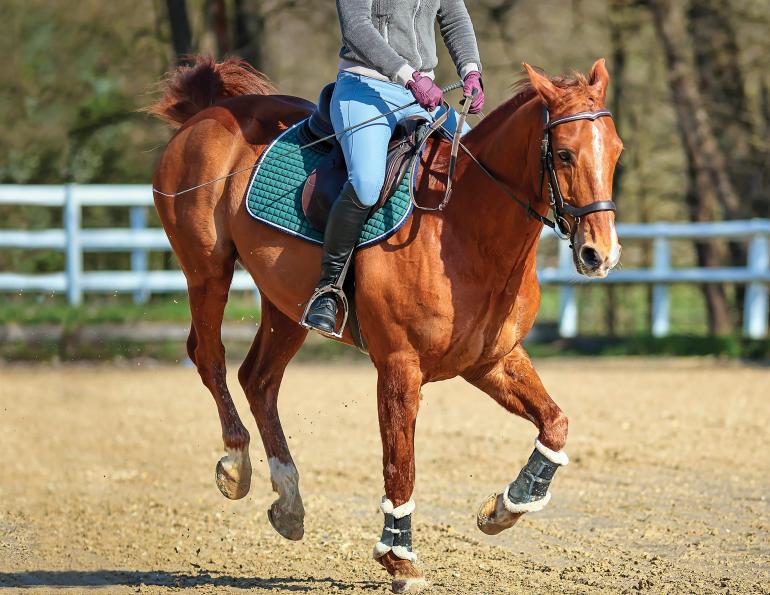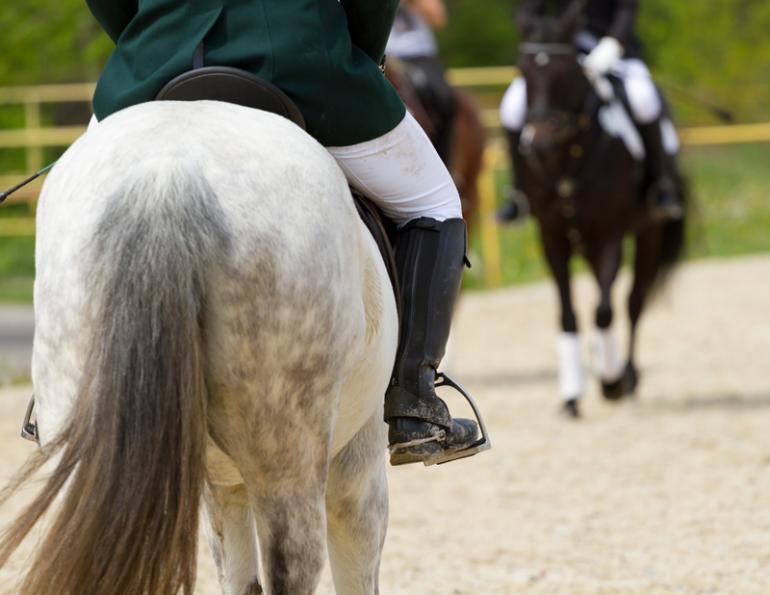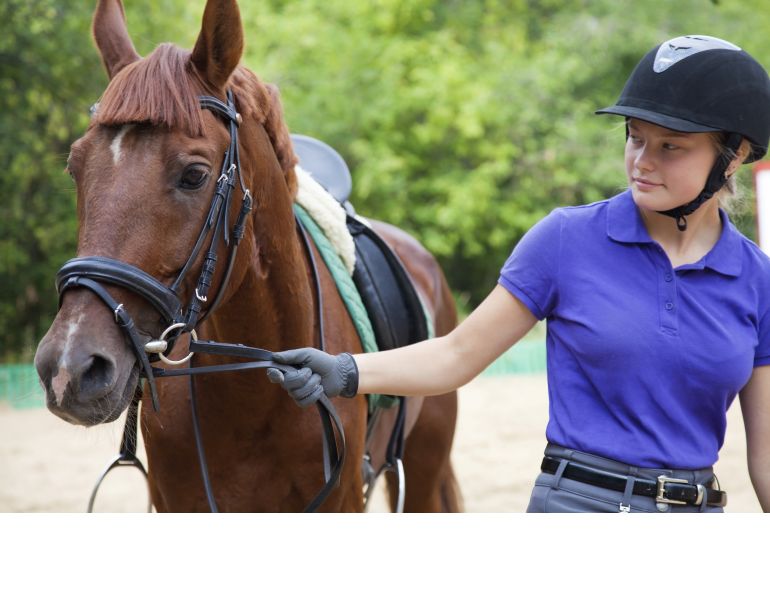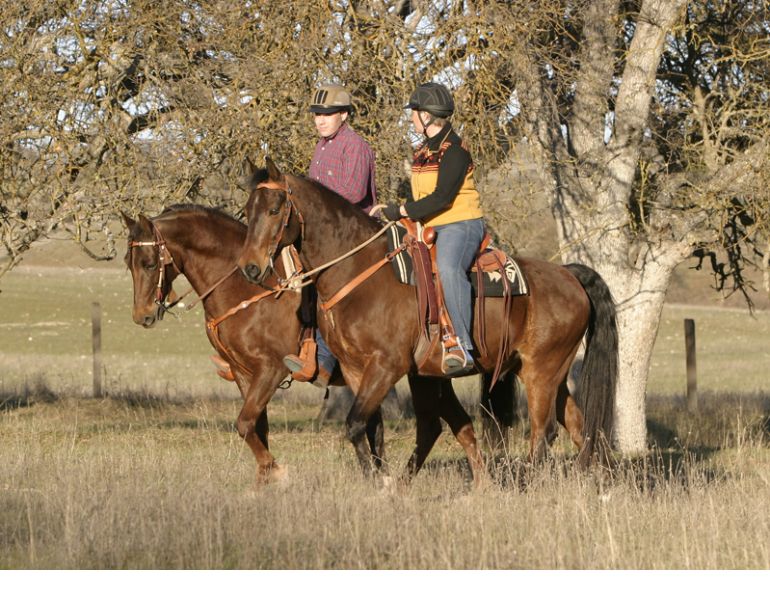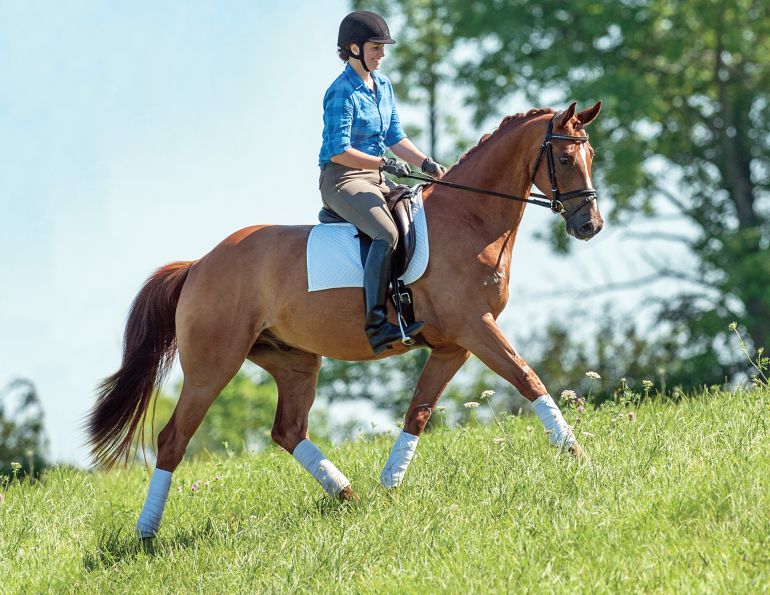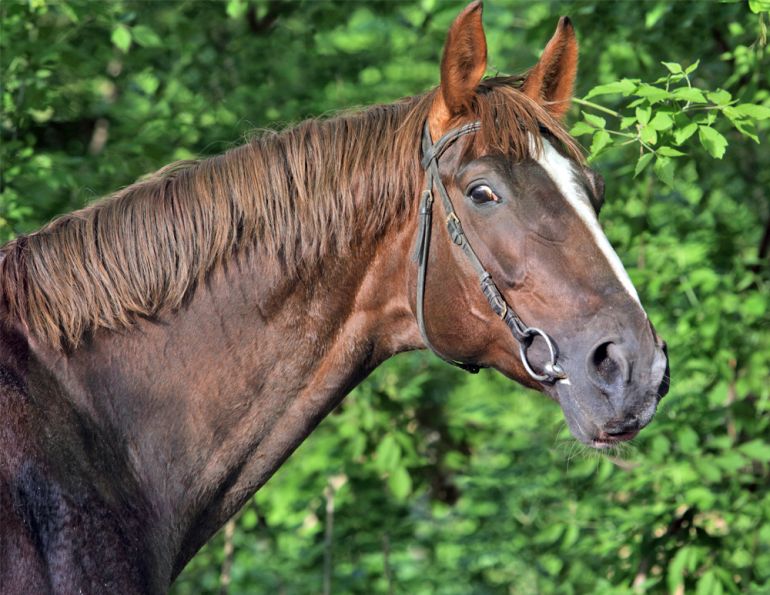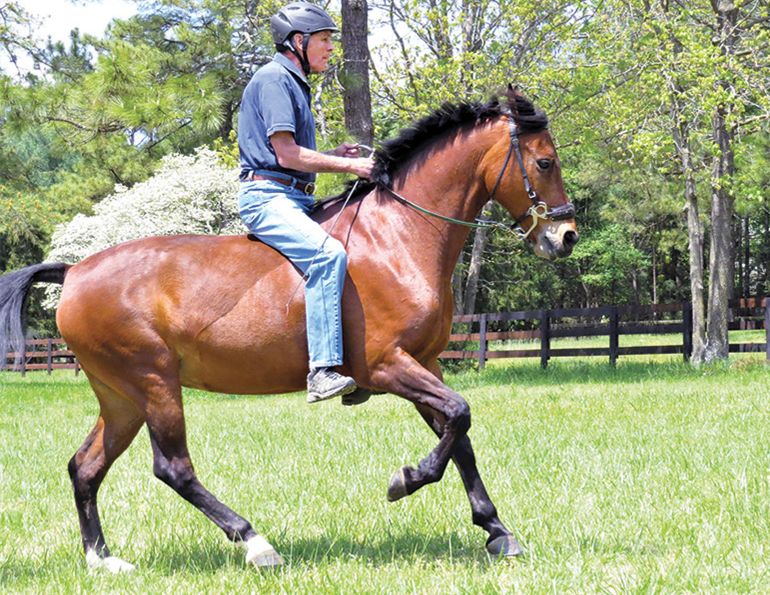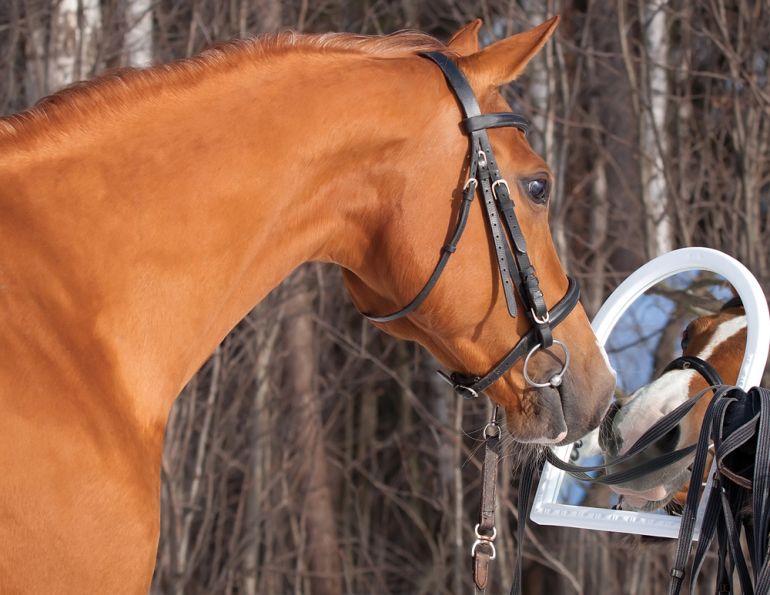Rebuilding After Setbacks
By Lindsay Grice, Equestrian Canada coach and judge
“Experience is not the best teacher — only evaluated experience is.” These words of wisdom are from professor and pastor, Dr. Howard Hendricks.
The end of the horse show season is time for evaluation. What went well? What would you like to change? Competitors entering the next horse show without reflection often revisit mistakes like a Groundhog Day time loop.
In my years of training, coaching, and judging, I’ve gained a “wealth” of stories and experiences with horses, horse shows, and horse people. Yet, the value of experience dwindles if I fail to evaluate that experience — to take responsibility for my blunders and strengthen my strengths.
Doing the same thing over and over and expecting a different result may count as experience but leaves me riding in the same rut.
In equestrian sport, your teammate doesn’t speak or think “human.” He doesn’t even share your goals. So, expect the unexpected — mistakes, mishaps, and misbehaviours.
Evaluating each of these show ring experiences depends on discerning WHY they happened. We’ll get to the foundation and consider how to rebuild after a show ring setback, using the tools of equitation science — the science of how horses learn and think.
Related: Winning Tips for Flat Classes
MISTAKES
As a judge I groan when my winner misses a lead, a jumping distance on the last line, or moves a foot during showmanship inspection. I reluctantly assign penalties, and the red ribbon winner earns the pastel — or no ribbon at all.
Rider errors (those OOPS moments) are minor miscalculations, like asking for the wrong gait, rising on the wrong diagonal, or forgetting a pattern element altogether. Bigger bloopers involve forgetting the course, forgetting your show number, or using two hands on curb reins.
Evaluation is taking inventory of what happened; it’s a humble admission of mental lapses. I failed to deeply memorize the course. I rushed through that movement because I was nervous. I (not my coach, not my Dad) was the one responsible for checking my equipment before riding through the in-gate.
Managing in the moment involves learning to carry on after a mistake in the ring and is part of becoming a savvy competitor. Guard against one element of your performance having a domino effect on the remaining elements. Wrong diagonal? Sit a beat and carry on. Start a spin in the wrong direction? Spin the right way and finish strong.
Rebuilding in the off season is not just a cliché; each mistake is a learning opportunity. After riding off-course more times than I can count, not wanting to repeat that lost-in-the-jungle-of-jumps feeling was the incentive to deeply memorize. What’s the source of your mental lapse? Is it distraction? Perhaps your mind wandered to the bleachers; you failed to ride every stride and your horse broke gait; or, you were focused on your riding position to the point of being stiff and you lost your flow, your horse’s stride got flatter and you failed to notice.
Miscalculations and miscues from the rider are fairly straightforward and can be remedied at home with some good coaching and practice. Prepare for the next shows by practicing the tough stuff. Overprepare and go with the flow.
MISHAPS
Mishaps are more serious. When equestrians take their horses off-property, it’s not a matter of if but when “suddenly” moments will happen.
Your horse kicks out at a competitor passing too close, gets spooked by a driving cart in the adjacent warm-up ring, or stumbles and gets rattled.
Evaluation: Why do mishaps happen? A common denominator is fear. As prey animals, horses feel vulnerable in unfamiliar territory. They feel claustrophobic when trapped. They rush, refuse, and rear. To make matters worse, the adrenaline rush of the incident can frame a scary snapshot in the horse’s mind, retrieved when similar circumstances arise. A prey animal’s instinct tells him there’s safety in numbers. Consequently, the spook of one horse in a flat class triggers a flurry of flight!
What were the steps that led to the incident? Could it have been prevented? Were there any warning signs?
Managing in the moment is minimizing the impact to other competitors and to your longer-term training goals.
Related: Developing Your Cool Ride
With experience, riders can recover and ride on. I’ve salvaged flat classes after mishaps by maintaining composure and getting back on track within a few strides of the incident.
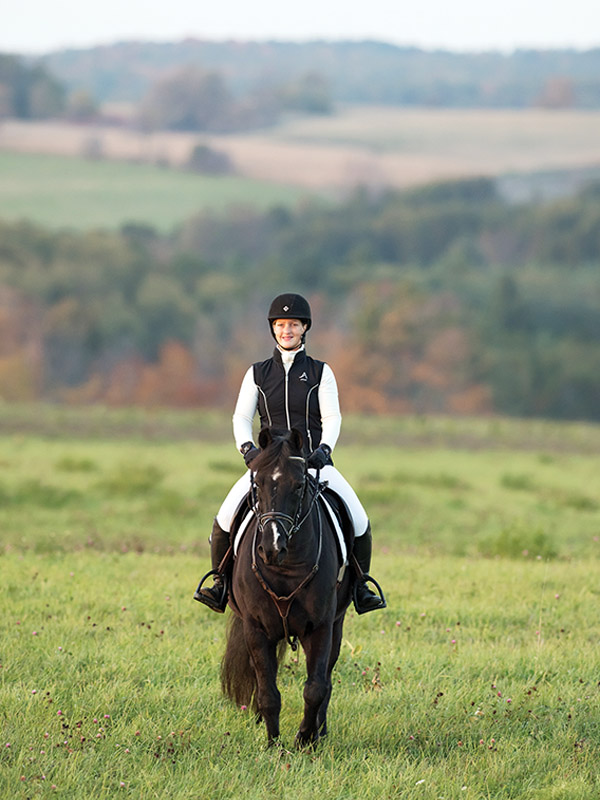
Prepare your horse well before taking him to a show by exposing him to a variety of environments and distractions. Practice in a crowded arena where there are lots of things happening, and in a quiet field all alone, and expose him to a variety of distractions. Photo: Clix Photography
Endeavour to end on a positive note. Excused for refusals? Take advantage of the courtesy jump if the judge permits — as a judge, I always do. Take the inside track if your horse is distracted by activity outside the rail. Slow to a trot to complete your pattern if your horse loses his cool at speed. Antsy in the line up? Better to walk a calm circle than forcing your horse to stand there.
There’s a time for camouflaging the mistake and showing to win. Teachable moments are investments in the training of your horse, even if they forfeit classes. However, do so with tact. Consider your fellow exhibitors. Be gracious to the judge who is letting you finish your pattern, even if you’ve technically been disqualified. And consider your horse, who won’t respond well to your remedial training efforts when stressed.
As a judge, I can prevent some mishaps, stopping a class when I see energy building, but often I can only observe, record, and occasionally excuse competitors after things go wrong. Judges rarely advise on training issues.
Related: HorseWise: Success Without a Coach
What I wish I could say to several competitors at every show is this: Please, for the sake of your safety and your horse’s well-being, don’t go to the show before you’re ready. When your horse responds to a cue “most of the time,” he hasn’t thoroughly learned it. And, like wet cement, in a stressful environment, mishaps can leave deep imprints.
Rebuild in the off-season once your horse is performing reliably. Practice in different environments — in the midst of distraction, in a crowded arena, or all alone (even with his buddies whinnying to him). Take field trips to other farms and schooling trips to shows. Cross a variety of bridges, jump a variety of fillers. A skill isn’t learned until it works every time, everywhere.
Acknowledge that your own fear, possibly masked by the adrenaline of the moment, revisits you with flashbacks in the days following the event. Work through this with your coach.
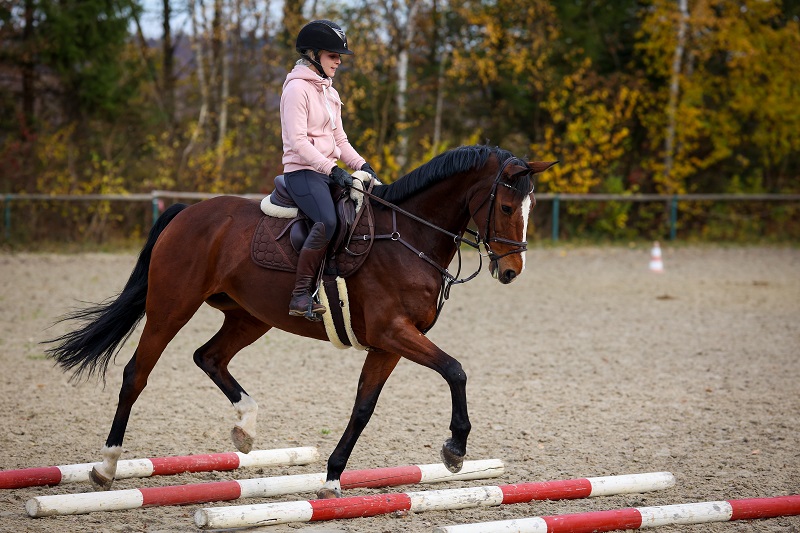
Rebuild in the off-season by breaking skills into simpler steps to reinforce the horse’s understanding of your aids and build confidence. Photo: Shutterstock/Rolf Dannenberg
Related: Practice Between Riding Lessons
MISBEHAVIOURS
I see some red-faced riders at horse shows, “schooling” (jerking) on their horses after an episode of balking, bucking, or bolting. Yet many “misbehaviours” are the culmination of small resistances, camouflaged because we didn’t want to blow the class. Every bulge offline toward the in-gate adds up until the horse is stopping at the gate and kicking out at the rider’s outside leg. Misbehaviours, swept under the carpet to earn a ribbon, come out sideways later.
Evaluation, or why do misbehaviours happen?
Anticipation — Your horse navigates the trail gate on autopilot, sets up his own feet in showmanship, or does “automatic” lead changes with a change of direction. He seems to know what comes next, which is manageable until you try to upset the order; interrupting learned routine makes horses nervous.
Restraint — Nervous horses held in place are apt to blow up like a shaken pop bottle. The showmanship horse restrained to stand still, with no break in the chain’s tension, flies backward. The driving horse restricted from walking out of the line-up, rears. Conflict behaviour describes “misbehaviours” from feeling trapped or confused without a clear option to find relief.
Related: How to Walk a Jump Course
The root of refusals is logical. Jumping and crossing obstacles clashes with your horse’s instinctive aversion to taking unnecessary risks. Regrettably, a refusal is rewarded when excused from the ring without the opportunity to correct it. Thus begins a downward spiral of “untraining” your horse.
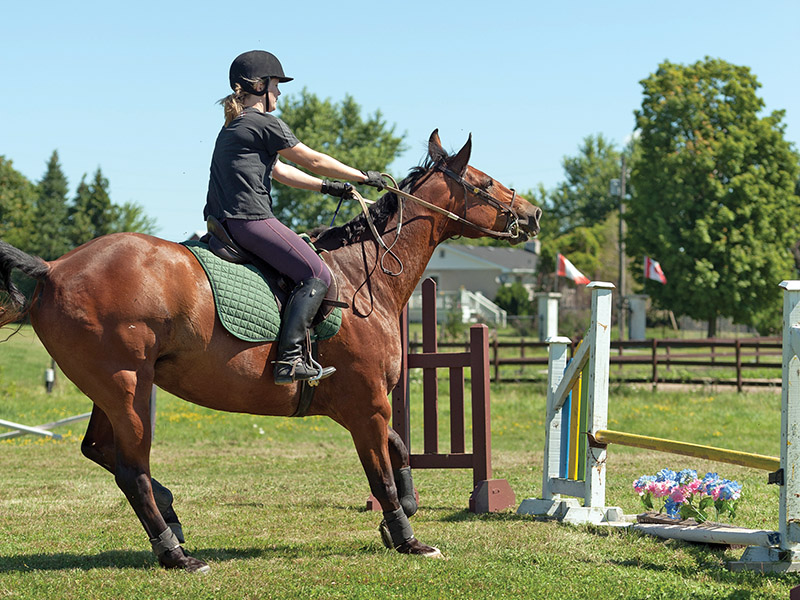
Refusals are founded in the horse’s instinct to avoid unnecessary risks. Why jump when it’s easier to just go around? Photo: Clix Photography
You might get lucky if entering a class with a missing link in your training. But odds are, if it’s not happening outside the ring, it’s not likely to happen inside.
Horses learn from repetition — that’s “horse training 101.” Riders may unwittingly allow their horses to discover a pattern by repeating a routine. Horse show routines become habits by mid-show season.
“In almost all training, situations, the most effective way to ‘delete’ behaviours is to prevent them from being expressed,” — Dr. Andrew Mclean
Managing in the moment. Ideally, identify the particular aid that your horse is ignoring or opposing and address the issue as soon as you meet resistance with your horse. In the show ring, it may be impossible to follow through on this teachable moment without disrupting the class, as an issue can get worse before it gets better.
Keep your cool. Disappointment, embarrassment, and fear are emotions that provoke us to overreact in the moment. Emotions muddle the clarity of our aids or magnify them like a megaphone. A rider’s emotion ignites her horse’s emotion. Horses in a state of anxiety don’t learn. Emotions can cloud the logical solution to the issue.
Rebuilding in the off-season may begin physically. Take measures to rule out pain as the possible source of misbehaviours. On home turf, when cooler heads prevail, you can try to recreate the scenario, try another approach, or break the skill down to simpler steps. Exactly which signals were crossed when your horse blew up, reared up, kicked out, or deked out? Does your horse deeply understand the aids, allowing you to direct his feet to go where his instinct tells him not to? Stride lengthening and shortening, lateral movements, and square corners are regular parts of every lesson I teach. Once established, we practice them everywhere — while riding in and out the gate, beside distractions, or beside other horses sharing the arena.
Still at an impasse with your horse? You may need to enlist the help of a reputable trainer in closing the can of worms opened from the show season. And once you’ve made some headway, some time off is often good medicine.
IS MY HORSE READY FOR THE RING?
The wisdom in riding competitively is knowing when to push and when to wait. Pushing to the next level involves risk. I think of measured risks as those 80 percent likely to succeed. Success can make us greedy to ask for more. Things will go wrong in the show ring and the odds of this are higher if you’re riding on luck versus thoroughly practiced skills.
Mistakes, mishaps, or misbehaviours in the show ring need not become a setback, but rather a speed bump in your training progress. They compel us to slow down and consider the horse’s perspective in WHY it happened and HOW to rebuild.
“Failure is the opportunity to begin again, more intelligently,” — Henry Ford
Related: How to Enjoy Fall and Winter with Your Horse - 10 Ways
Related: Psychology of a Successful Horse Rider
Main Photo: Shutterstock/Rolf Dannenberg



